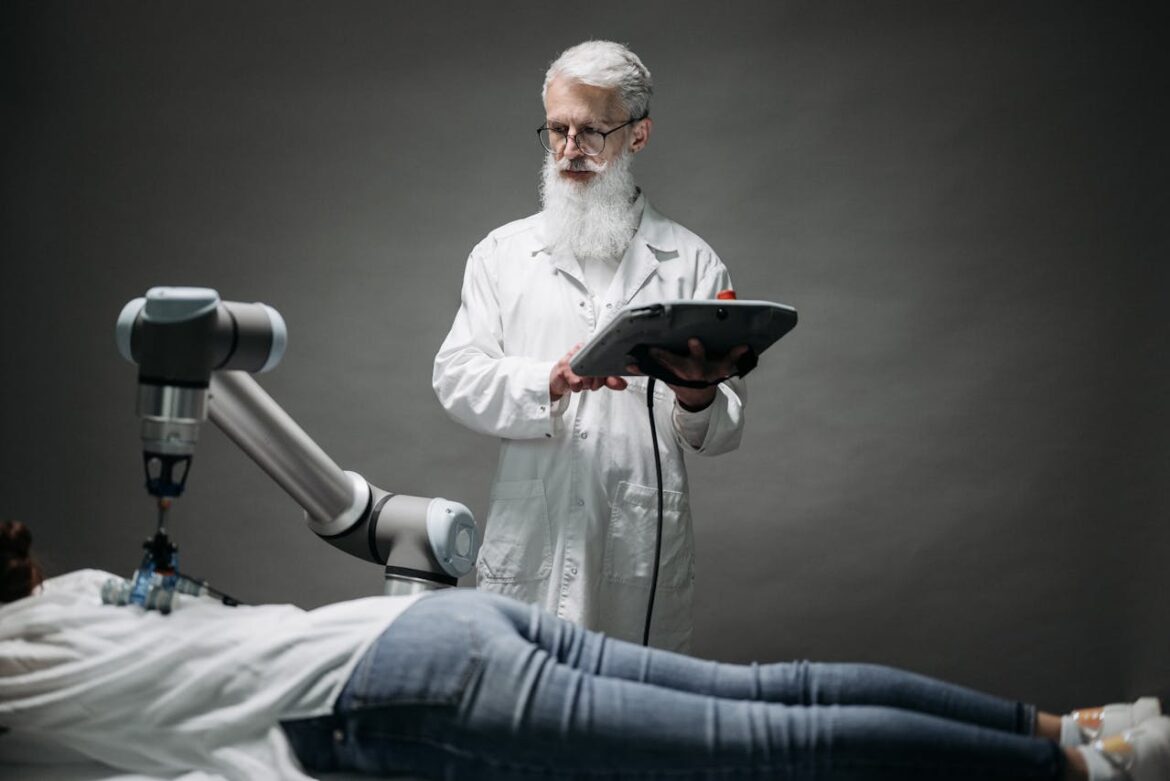AI is transforming healthcare. This year marks a turning point. Hospitals and clinics aren’t just experimenting with AI anymore, they’re deploying AI tools at a breakneck speed. What started in research labs now drives patient care, operations, and drug discovery.
Why AI Growth Exploded
Money’s pouring in. Governments and VCs are betting big on health-tech startups while regulators finally cleared approval pathways. But that’s not the whole story. The real catalyst? Data overload. With electronic health records, imaging scans, genetic profiles, wearables, doctors might have trouble processing it all. AI can process it all. The AI healthcare market has exploded, and will continue to grow, from $26.57 billion in 2024 to a projected $187.69 billion by 2030, representing a staggering 38.62% compound annual growth rate, validating the unprecedented investment and adoption that we are witnessing across the industry. Source: https://www.grandviewresearch.com/industry-analysis/artificial-intelligence-ai-healthcare-market. And, it spots patterns in massive datasets and delivers insights instantly.
Diagnostics Get Upgraded
AI shines its brightest in diagnostics. Radiologists now have algorithms that can catch tumors and fractures that they might miss. Some cancer detection systems will match or even outperform human experts. A landmark study analyzed 1.2 million mammograms across Germany and the U.S. It found that when AI and radiologists collaborated, breast cancer was detected 2.6% more accurately than when radiologists worked alone. This is evidence helping to prove that future AI will truly augment the field of health care. Source: https://www.breastcancer.org/screening-testing/artificial-intelligence (referencing The Lancet Digital Health, July 2022).
Speed can change most things. While a radiologist needs hours for hundreds of scans, AI can do a pre-scan of all of the available scans and flag the suspicious scans along with their related suspicious areas in minutes. Doctors would be able to better focus their attention on the complex cases that need human judgment rather than drowning in routine scan reviews.
Personalized Medicine Becomes Practical
The concept of tailoring treatment plans to individual patients is not new, but AI is finally making personalized medicine practical at scale. By analyzing genetic information alongside lifestyle data, AI tools can recommend treatment paths with higher chances of success. For example, oncology patients may now receive therapies selected based on their unique genetic profile, which reduces trial-and-error prescribing and improves survival rates.
In my view, the real breakthrough lies in the way AI can continuously update these treatment recommendations. As new data from patients’ responses and broader medical research becomes available, the system refines its suggestions. This kind of dynamic care is something traditional medicine struggled to achieve until AI came into the picture.
AI in Hospital Operations
Beyond direct patient care, AI is revolutionizing hospital operations. Administrators are using predictive analytics to forecast patient admission rates, optimize staffing schedules, and manage resources more effectively. This is particularly important in emergency departments where sudden surges in patient numbers can overwhelm the system.
I’ve seen how AI-driven systems can reduce wait times by predicting peak hours and assigning staff accordingly. Some hospitals are also using AI to monitor equipment usage, preventing breakdowns before they occur and ensuring critical devices are available when needed. These behind-the-scenes improvements might not make headlines, but they significantly improve the quality of care.
Enhancing Drug Discovery
Pharmaceutical companies are also benefitting from this wave of AI adoption. Developing a new drug traditionally takes years and billions of dollars, but AI is cutting down both the time and cost involved. Machine learning models can analyze molecular structures, predict which compounds are most likely to succeed, and even simulate clinical trials.
I find this particularly exciting because it means treatments for rare and previously neglected diseases are now within reach. With AI streamlining discovery, pharmaceutical companies can take more calculated risks, leading to innovations that would otherwise remain shelved due to high costs.
Overcoming Ethical and Privacy Challenges
Of course, record-breaking growth does not come without challenges. One of the biggest hurdles remains patient privacy. AI systems rely on massive datasets, and ensuring this data is protected is critical. Striking the right balance between innovation and privacy has been a recurring debate in every healthcare forum I’ve followed this year.
Bias in AI algorithms is another concern. If training data is not diverse enough, the system might produce inaccurate or even harmful recommendations for underrepresented groups. I believe that addressing this issue requires collaboration between technologists, healthcare providers, and policymakers to ensure fair and inclusive AI solutions.
Training the Workforce for AI Integration
Doctors and nurses are not traditionally trained to work with AI, which makes education and training crucial. Hospitals are now rolling out AI literacy programs to help healthcare workers understand how to interpret algorithmic suggestions and integrate them into their decision-making processes.
I’ve spoken with clinicians who initially resisted AI, fearing it would take over their roles. However, once they realized it could act as a supportive tool rather than a replacement, their attitudes shifted. This cultural change is just as important as the technology itself because no matter how advanced AI becomes, it still requires human oversight and empathy in patient care.
The Role of Regulation in Expansion
Regulatory clarity has played a huge part in this year’s unprecedented growth. Health authorities in several countries have streamlined approval processes for AI-based medical tools, giving innovators more confidence to invest in new technologies. The U.S. Food and Drug Administration (FDA), for example, has been issuing guidelines on how AI systems should be tested, validated, and monitored once deployed.
From my perspective, this kind of regulation is necessary to build trust among healthcare providers and patients. Without it, adoption would stall because people would question the safety and reliability of these systems. Regulatory frameworks are evolving in parallel with technological advancements, which is one reason adoption has surged so quickly this year.
Global Adoption Trends
While the U.S. and Europe remain major hubs for AI healthcare applications, adoption is growing worldwide. Countries in Asia and the Middle East are investing heavily in AI to modernize their healthcare systems. In Africa, startups are using AI for mobile diagnostics, bridging gaps in regions with limited access to doctors.
I find it inspiring that AI is not limited to wealthy nations but is also being adapted for low-resource environments. Mobile-based AI diagnostic apps are helping rural clinics detect diseases earlier, which can make the difference between life and death. This kind of global expansion shows just how versatile AI can be when applied thoughtfully.
The Future Outlook
Looking ahead, the trajectory of AI adoption in healthcare seems unstoppable. With every success story, more hospitals and governments are encouraged to invest in this technology. However, the future will also depend on how well we address challenges like bias, ethics, and privacy. If these issues are neglected, the momentum could slow down.
Still, I am optimistic because the progress we’ve seen this year reflects not just technological readiness but also cultural acceptance. Healthcare professionals and patients alike are beginning to trust AI more, which makes me confident that we are only at the beginning of a much larger transformation.
Conclusion
AI adoption in healthcare has hit record growth this year because the technology has proven itself valuable in diagnostics, personalized medicine, hospital operations, and drug discovery. Regulations have provided clarity, investments have surged, and medical professionals are starting to embrace AI as an ally rather than a threat. Challenges remain, particularly around privacy and bias, but the overall trajectory points toward a future where AI plays an integral role in global health.
As I reflect on the developments of this year, it feels clear that AI is no longer a futuristic promise. It is now a practical, reliable, and rapidly expanding part of healthcare delivery. What excites me most is that the momentum we are witnessing today is just the foundation for even greater innovations in the years ahead.

